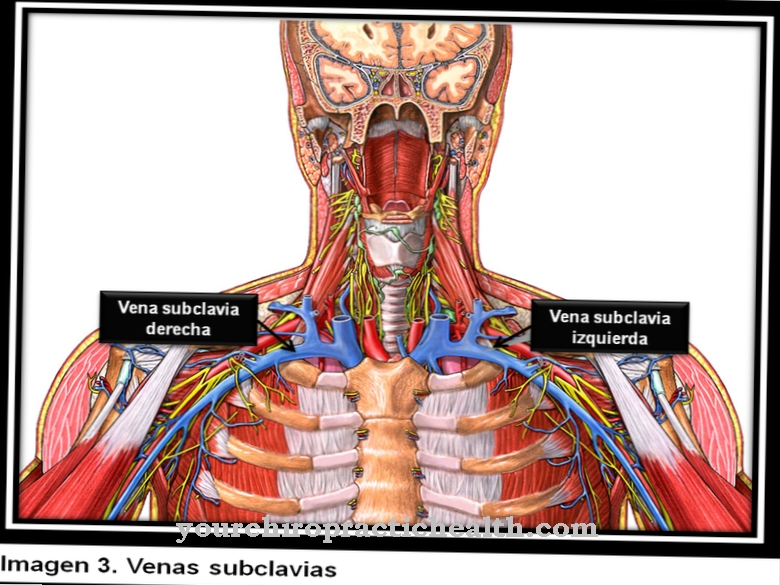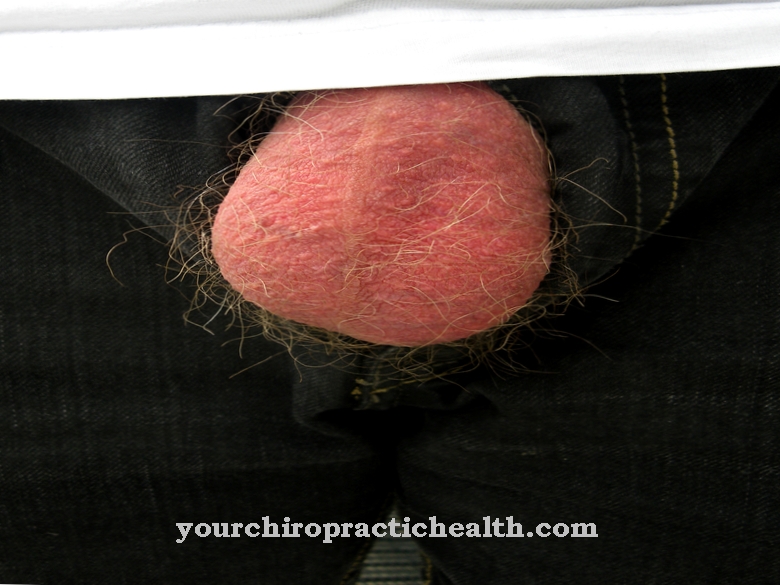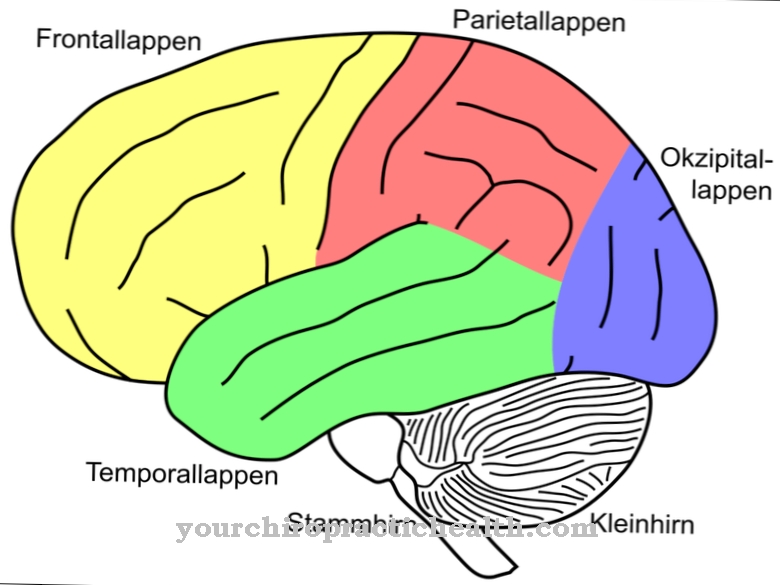The Large polygonal leg belongs to the hand bones of humans. It is easy to feel when the back of the hand is pulled up. The polygonal leg has a trapezoidal appearance.
What is the large polygonal bone?
The large polygon is part of the human skeletal system. It's a bone in the back of the hand. It is also known as the trapezium or carpale primum. As soon as the back of the hand is pulled upwards, the large polygonal bone can be seen and felt under the skin.
Due to its trapezoidal shape, it can be felt well below the thumb. Together with the metacarpal bone, the large polygon forms the thumb saddle joint. The rhizarthrosis, which is also described as thumb saddle joint arthrosis, has its origin in the thumb saddle joint. In this disease the visual swelling of the ball of the thumb is very noticeable. The polygon is often affected by broken hands.
It houses some muscles that are located within the palm of your hand. The thumb is exposed to a variety of stresses over the course of life. It is mostly used unconsciously in countless everyday processes. This means that the bones of the thumb and the ball of the thumb are heavily used for life. If it is defective, simple operations such as grasping and holding objects or grasping the door handle can only be carried out with difficulty.
Anatomy & structure
The human hand consists of a total of eight carpal bones. They include the scaphoid bone, moon bone, triangular bone, pea bone, large and small polygonal bone, head bone and hooked bone. The trapezium has a trapezoidal structure.
The carpal bone is located towards the thumb on the radial side of the hand. It is located above the scaphoid bone, the scaphoid bone, and the small polygonal bone on the outside of the hand. In addition, it borders on the first metacarpal bone. Various muscles attach to the large polygonal bone. They include the ab abductor pollicis brevis muscle, also known as the small thumb spreader, the opponens pollicis muscle, and the flexor pollicis brevis muscle, which is known as the small thumb flexor.
The large polygonal bone has a cusp, the tuberculum ossis trapezii. In its center is a furrow known as the sulcus musculi flexoris carpi radialis. The flexor carpi radialis muscle passes through it. Together with the metacarpal bone, the large polygonal bone forms the thumb saddle joint. This is known as the articulatio carpometacarpalis pollicis.
Function & tasks
The great polygon acts as the origin of various muscles of the hand. They all serve to ensure the mobility of the fingers and the hand. Their respective paths run from the polygon to the palm of the hand, over the individual fingers and down to the fingertips. They allow the fingers and also the finger joints to move. The muscles of the thumb and fingers are very delicate. In addition, the muscle fibers of the thumb and the ball of the thumb are very powerful.
The large polygonal bone, together with the metacarpal bone, has the function of forming the thumb saddle joint. This is surrounded by several bands. The ligaments stabilize the thumb saddle joint, as it is heavily used in the course of life. The thumb saddle joint has a saddle-shaped appearance. This enables rotating movements of the thumb in two axes.
The movement structure of the joint is comparable to that of a ball joint. Everyday manipulations are made possible by the thumb and the thumb joint. This includes grasping, grasping or holding onto objects. The thumb is used for most of the hand movements such as writing, feeding or brushing teeth. He is involved in almost every step. Applying pressure through the hand is often done with the ball of the hand or thumb. The reason for this is the enormous force that is present in the ball of the thumb.
Diseases
The thumb saddle joint, like other ball joints, can be subject to wear. Since this bone wear is irreparable, the damage can only be repaired by inserting a prosthesis.
This is done in a surgical procedure with a joint that is modeled on the patient's individual joint. The prosthesis is molded from stainless steel. The large polygon is often involved in broken hands or bruises. If hand injuries occur after an accident or fall, X-rays should be used to check whether the fracture is straight or whether the bone has splintered. In the event of a fracture, the hand is usually cast in plaster for a few weeks. It must be spared in the healing process so that the bone fracture can regenerate.
If the bone splinters, further surgical interventions with the aim of removing the splinters can occur. A common disease of the thumb saddle joint is rhizarthrosis. This disease, which is increasingly diagnosed in women, means that those affected are often no longer able to carry out everyday processes. Sick people cannot open a bottle, for example.
Even light objects can no longer be held and there is severe pain in the hand. This disease leads to a narrowing of the joint space. Treatment options include surgical or non-surgical measures. As soon as the disease is not very advanced, an injection of hyaluronic acid into the joint may be effective. Muscle inflammation or a tear in the capsule near the ball of the thumb impair the mobility of the thumb. They are mostly perceived as painful.
























.jpg)

.jpg)
